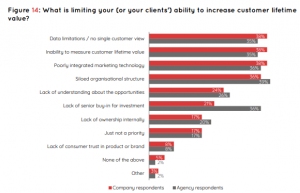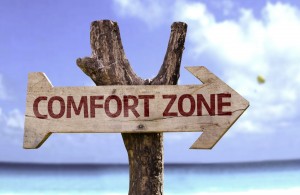It likely comes as no surprise to hear that the last several years have been particularly stressful for the average worker. According to a recent survey from Gallup, U.S. and Canadian workers are among the most stressed in the world: With concerns looming over things like physical health, isolation, potential or actual job loss, and a lack of social support, 57% of U.S. and Canadian workers reported feeling stress on a daily basis, as did 43% of workers worldwide.
Businesses have made great strides in managing remote employees since the pandemic first forced a majority of the workforce to work from home. Still, Gallup’s 2021 State of the Global Workplace report indicates that daily stress felt by workers has increased to record heights amid COVID-19.
With stress levels at an all-time high, it is more important than ever for organizational leaders to do their parts to promote wellness among their remote teams. But implementing new policies and programs is only half the battle.
It’s easy to encourage wellness on paper, but employees may be wary of taking advantage of the opportunities provided to them if they’re concerned about how they’ll be perceived by colleagues or whether they’ll lose out on a raise or promotion. By modeling wellness practices as a leader in the organization, you can set an example that plays a big role in mitigating these concerns.
Here’s how.
Modeling Wellness in the Remote Workplace
It may seem straightforward, but setting a good example as a business leader involves more than just good intentions. According to the “social learning theory” first developed in the late 1970s by Canadian-American researcher Albert Bandura, there are four conditions that must be met for leaders to achieve effective modeling:
1. Attention: For your actions to be effective, members of your team must be aware of and paying attention to what you are doing. With employee engagement at an all-time high, most remote leaders can be confident that their teams have their eyes open. Make sure they’re getting the right message by modeling the behavior you want them to mirror.
2. Retention: It’s also important for employees to remember the behavior that you’re modeling so they can emulate it themselves. Through repeated actions and frequent communication, you can encourage team members to commit these practices to memory and perhaps try them out for themselves.
3. Reproduction: Modeling behaviors that your employees can’t replicate will only result in more frustration. For example, taking time off to stay in a luxury resort while your team members are concerned about their personal finances may not yield the result you’re looking for. If you want to make wellness a priority, be sure to take steps to ensure your employees can actually do the same.
4. Motivation: Employees need to have a reason for emulating the behavior they’re seeing. Over time, team members will likely start to feel the effects of improved personal wellness for themselves. Initially, however, you may consider developing an incentive program that encourages wellness activities by offering special recognitions or rewards.
The Six Components of Wellness
In addition to meeting the conditions for effective modeling, it’s important for remote business leaders to remember that wellness is a multi-dimensional concept. The National Wellness Institute outlines six distinct dimensions of wellness: social, occupational, spiritual, physical, emotional, and intellectual. For best results, leaders should consider each of these facets both individually and holistically, doing their best to emulate the activities they want members of their team to mirror.
Here are some ideas to get started with each of the six components:
1. Social Wellness: Remote managers can encourage connections and networking among team members by participating in and creating opportunities for social interaction. These could take the form of Zoom “happy hours” or coffee breaks, or even a Monday morning Slack thread for casual chit-chat. Alternatively, leaders could take a day off to volunteer in their communities, and offer employees the same opportunity.
2. Occupational Wellness: Enjoying the work they do is an important aspect of an individual’s overall wellness, and communicating enthusiasm for your work as a leader can encourage employees to do the same. Show them why you enjoy your job and how it helps you feel fulfilled and purposeful. Enthusiasm is contagious!
3. Spiritual Wellness: Every business establishes a set of values and beliefs in the form of leaders’ visions and mission statements, and via the social causes the organization chooses to support. The role of a leader in a remote environment is to emulate these values and apply them in their everyday work. This means that if your business values customer relationships, you’ll want to show respect for your customers in all of your interactions so employees know their leaders practice what they preach.
4. Physical Wellness: One of the more straightforward aspects of wellness, making physical well-being a priority by developing good eating, sleep, and exercise habits may seem obvious, but shouldn’t be overlooked by managers. As a leader in the remote workspace, you can model prioritizing your own physical wellness by not making a habit of working late, taking time off for family obligations, going on longer vacations, and sharing exercise routines or healthy recipes.
5. Emotional Wellness: Leaders must exhibit an ability to manage their emotions and understand and respond appropriately to the emotions of others. This requires taking a thoughtful approach to team interactions, especially in a remote environment, where a lack of in-person interaction can quickly lead to misunderstandings and conflict.
6. Intellectual Wellness: Encourage your team members to always be learning by prioritizing creativity and professional development. Modeling this as a leader may look like hosting and participating in brainstorming sessions, or completing additional training alongside your team members.
A Last Word
Modeling good behavior can be a very effective method for encouraging remote employees to take care of themselves and their families, which can lead to reduced turnover and boosted productivity among team members. However, it’s important that certain conditions be met, and that leaders think of wellness holistically in order to ensure employees feel empowered to take these steps without fear of retribution.
By considering the various aspects of wellness and implementing practices that cater to each, remote business leaders can encourage self-care and promote longevity in their teams, while enjoying first-hand the benefits that come from putting their own personal wellness first.
Business & Finance Articles on Business 2 Community(12)






